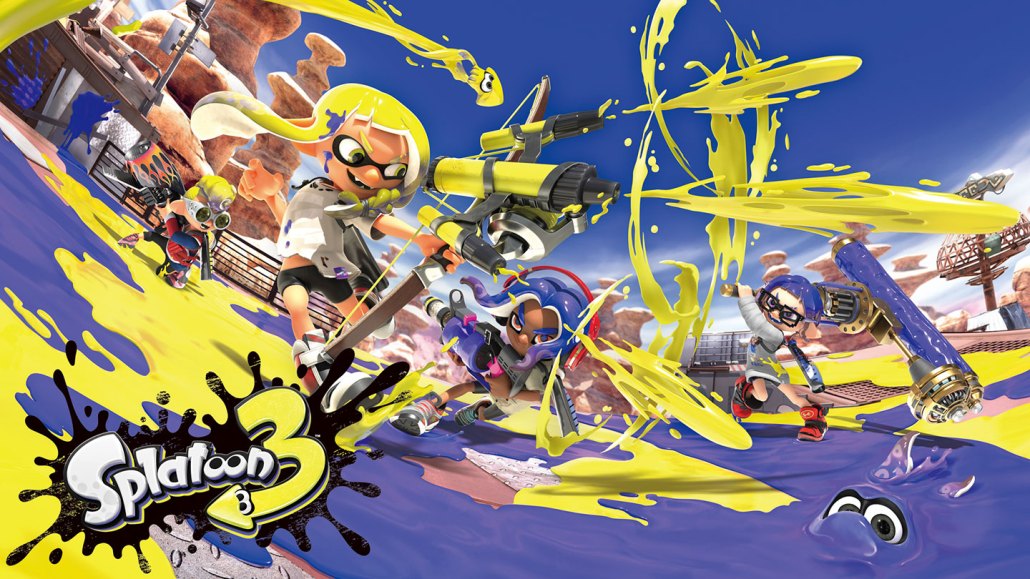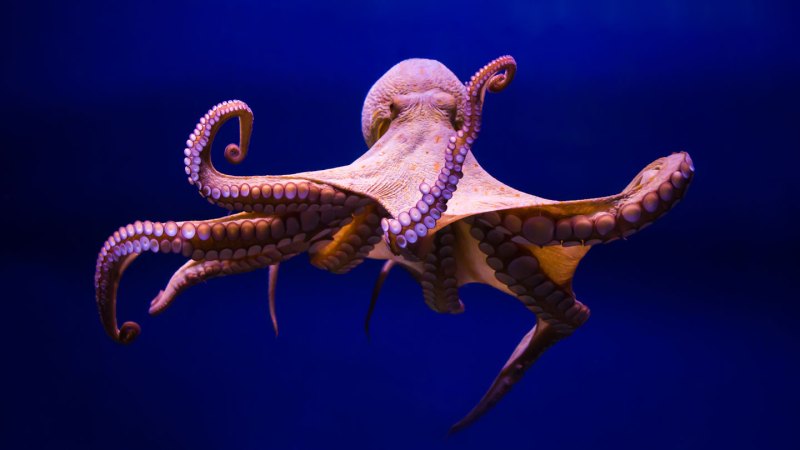Splatoon characters’ ink ammo was inspired by real octopuses and squid
Cephalopods shoot ink too — but mostly to defend, rather than attack

Characters in Nintendo’s Splatoon series shoot colorful ink through fancy gear like Splatterscopes, Bloblobber pails and Tri-Stringers. Real squids and octopuses shoot ink, too. But they use it mostly for defense, rather than offense.
Nintendo
Share this:
- Share via email (Opens in new window) Email
- Click to share on Facebook (Opens in new window) Facebook
- Click to share on X (Opens in new window) X
- Click to share on Pinterest (Opens in new window) Pinterest
- Click to share on Reddit (Opens in new window) Reddit
- Share to Google Classroom (Opens in new window) Google Classroom
- Click to print (Opens in new window) Print
In Nintendo’s Splatoon games, rising sea levels have killed off most land dwellers, and sea creatures now reign. Kids known as Inklings and Octolings can transform into squids and octopuses, and they duke it out with weapons that spew ink. This thick, colorful goo is used to paint over buildings and the ground. Real-life squids and octopuses shoot out ink, too. But how does the ink of Splatoon’s rowdy kids compare?
For one thing, squids, octopuses and other cephalopods have built-in ink shooters. These soft-bodied animals use special muscles to draw water under the main part of their body, known as the mantle. This oxygen-rich water passes over the gills and lets the animals breathe. The water is then expelled through a tube known as a siphon. Cephalopods can also use this funnel to squirt ink.
These inks don’t come in the technicolor hues of the Inklings. Octopus ink tends to be solid black, while squid ink is more of a bluish-black, says Samantha Cheng. This squid biologist is director of conservation evidence at World Wildlife Fund in Portland, Ore. Other cephalopods called cuttlefish produce a dark brown ink often referred to as “sepia.” Cephalopod inks get their dark color from a pigment called melanin. This is the same substance that helps color your skin, hair and eyes.

As ink moves through a cephalopod’s siphon, mucus can be added. The more mucus added to the ink, the stickier it becomes. Cephalopods can use inks of different thicknesses to defend themselves in different ways.
“If a cephalopod is feeling like there’s a predator nearby, or they need to make a quick getaway, they can release their ink in different forms,” says Cheng.
An octopus spews its famous “smoke” screen by adding just a dab of mucus to its ink. That makes the ink very runny and able to spread out easily in water. This creates a dark veil that allows the octopus to escape unseen. Some cephalopod species, however, can add more mucus to create smaller clouds of ink called “pseudomorphs” (SOO-doh-morfs). These dark blobs are meant to look like other octopuses to distract predators. Other cephalopods can add more mucus to craft long threads of ink that resemble seagrass or jellyfish tentacles.
These inkings serve as more than just a distraction, though. A squirt of ink from a threatened cephalopod can alert others of the same species to possible danger. Cephalopods use special sensory cells called chemoreceptors (KEE-moh-ree-SEP-tors) to pick up on the signal, Cheng says. “They have chemoreceptors that are specifically tuned to the contents in the ink.”
Going hunting
In the Splatoon series, players go on the offensive as they splat each other with ink-loaded weapons. In contrast, most cephalopod species on Earth use ink for self-defense. The Japanese pygmy squid is one of the few exceptions, says Sarah McAnulty. She’s a squid biologist based in Philadelphia. McAnulty also runs a free phone hotline that will text squid facts for users that sign up (text “SQUID” to 1-833-SCI-TEXT or 1-833-724-8398).
Scientists learned that Japanese pygmy squids use their ink to hunt by studying 54 squids collected from around Japan’s Chita Peninsula. At Nagasaki University, researchers gave these super small squids three species of shrimp to hunt. The teeny hunters were observed trying to take down shrimp with their ink 17 times. Thirteen of these attempts were successful. Researchers shared the results in 2016 in Marine Biology.
The scientists reported two types of hunting strategies. Some squid shot a puff of ink between themselves and the shrimp before grabbing the shrimp. Others squirted ink away from their prey and ambushed from another direction. That’s some impressive planning for a creature the size of a pinky nail.
Whether they’re tricking a potential predator or taking down a tasty shrimp, cephalopods rely on moving water to help disperse their ink and give it shape. Having enough space also prevents the squid from sucking up its own ink. “The ink can clog their gills,” McAnulty says. “They basically suffocate from their own ink.”
McAnulty appreciates how the Japanese Splatoon series is bringing squid awareness to an international audience. “There isn’t enough squid in art depicted in the United States in my opinion,” says McAnulty. “So, anytime there’s a squid, I’m happy.”







